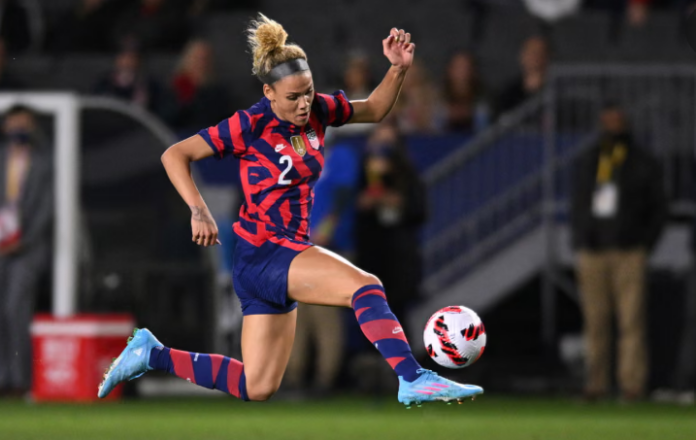The UEFA European Women’s Championship 2025, taking place across eight Swiss cities, is shattering records not just in attendance but in cultural impact. UEFA sold over 600,000 tickets in advance. Fan engagement is reaching a new level in the women’s game. Women’s football is not just growing, it is exploding into the global mainstream.
The women’s game has now captured the attention of millions. In 2025, packed stadiums, historic broadcasting deals, and high-stakes international tournaments are ushering in a new era for women’s sports and global football. Analysts project that the global women’s soccer audience will reach 800 million by 2030, and that women will comprise 60% of its fanbase. Additionally, 79% of these fans are cultural drivers, people shaping trends and influencing media and marketing landscapes.
Furthermore, it’s not just Europe watching. Across Africa, the Middle East, and Latin America, anticipation is surging. Fans from Nairobi to Buenos Aires and Cairo to Madrid are tuning in. A global arms race to build elite women’s squads has begun.
This movement marks more than just a sports milestone it signals a financial shift. Female players are now commanding major investment. PepsiCo launched global campaigns spotlighting female athletes, and Nielsen tracked audience behaviors revealing that women’s football fans engage deeply and hold strong commercial value.
Digital Access and Broadcast Innovation in Women’s Football Game.
In 2025, the UEFA Women’s Champions League will stream live on Disney+, bringing elite European women’s soccer directly into homes worldwide. UEFA has launched “Unstoppable”, a six-year strategy to grow the game by 2030 through expanded competitions and player development.
This digital shift is game-changing, removing barriers for fans in regions where women’s matches were previously hard to find. Mobile platforms and social media now stream matches across Africa, giving new fans and aspiring young girls easy access to global football dreams. Mobile platforms and social media now stream matches across Africa, giving new fans and aspiring young girls easy access to global football dreams.
Brand Opportunity & Fan Engagement

- Nielsen and The Business Research Company project that global fan engagement value will grow from $6.7 billion in 2024 to $8.1 billion in 2025, reflecting a compound annual growth rate of around 21 percent.
- Digital innovation, such as live mobile streaming and AI-driven interaction, is fueling active participation .
- Nielsen projects in its ‘Undervalued to Unstoppable’ report that the global women’s football fanbase will grow by 38% to over 800 million by 2030—with women comprising 60% of that audience.
- PepsiCo has extended its sponsorship through 2030, delivering in-stadium “Kick-Off Shows” and partnering across UEFA Women’s Champions League, Under 17/19 tournaments, and grassroots programs (PR Newswire).
- Nielsen’s data highlights that 72% of UK sports fans view sponsoring women’s sports positively, with 47% of fans in the highest income tier and 50% aged 25–44—making this demographic a lucrative target (Nielsen).
A Cultural Shift Beyond the Pitch in Women’s Soccer.

Football extends beyond stadiums and transforms cultures. National federations are investing in long-term development. Morocco, Colombia, and Nigeria are building strong youth pipelines, while Middle Eastern nations are removing barriers and launching new national leagues.
What makes 2025 truly different is infrastructure. Money, media, and mentorship are converging to elevate the game permanently. The sport is no longer “emerging” it has arrived.
A perfect example: Arsenal’s £1 million transfer of Olivia Smith from Liverpool. This record-breaking deal symbolizes rising salaries, soaring investments, and a new era of serious financial stakes in women’s football.
Regional Relevance in Women’s Football Sport
Football actively shapes and expresses identity in Africa and Latin America. Now, with Euro 2025 and Champions League coverage reaching new audiences, young fans are finding role models. Broadcasters and brands like PepsiCo are increasing sponsorships, recognizing the sport’s commercial power.
In Europe, the buzz around Euro 2025 is undeniable sold-out stadia, legacy programs supporting girls’ participation, and national teams like England, France, Norway, and Wales battling for continental glory.
The Middle East is quickly embracing the women’s game. From grassroots programs to national teams, participation is rising. With streaming and social media, fans are more connected than ever. Nielsen’s consumer insights are helping sponsors understand and tap into these fast-growing markets.
Conclusion: The Era Has Begun
Women’s football in 2025 is no longer the underdog. It’s the headline, the business model, and a cultural movement reshaping global sport.
From Zurich to Cairo, from Rio to Riyadh, the message is clear: this is only the beginning. Euro 2025 and the UEFA Women’s Champions League on Disney+ offer fans a blend of world-class athleticism and economic opportunity.
With PepsiCo backing campaigns and Nielsen proving the value of women’s football audiences, the future is bright. Young players now have global dreams. Fans have global access. And the game has a global destiny-unstoppable and undeniable.


